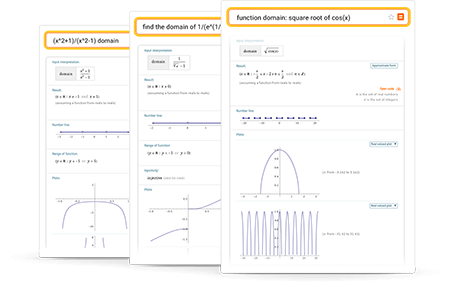Wolfram|Alpha is a great tool for finding the domain and range of a function. It also shows plots of the function and illustrates the domain and range on a number line to enhance your mathematical intuition.
Online Domain and Range Calculator
Find the domain and range of a function with Wolfram|Alpha
More than just an online function properties finder

Learn more about:
Tips for entering queries
Enter your queries using plain English. To avoid ambiguous queries, make sure to use parentheses where necessary. Here are some examples illustrating how to ask for the domain and range.
What is domain and range?
The domain of a function, , is most commonly defined as the set of values for which a function is defined. For example, a function f x that is defined for real values x in has domain , and is sometimes said to be "a function over the reals." The set of values to which is sent by the function is called the range.
Informally, if a function is defined on some set, then we call that set the domain. The values taken by the function are collectively referred to as the range. For example, the function x2 takes the reals (domain) to the non-negative reals (range). The sine function takes the reals (domain) to the closed interval -1, 1 (range). (Both of these functions can be extended so that their domains are the complex numbers, and the ranges change as well.)